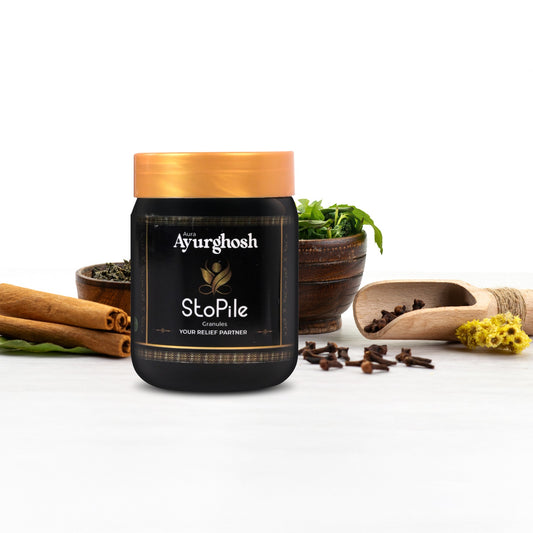STOPILE GRANULES 120G
Product Information
| SN | Official Name | Botanical Name/English Name | Qty |
|---|---|---|---|
| 01 | Pathya | Terminalia chebula | 0.117 g |
| 02 | Maricha | Piper nigrum | 0.023 g |
| 03 | Jiraka | Cuminum cyminum | 0.023 g |
| 04 | Pippali | Piper longum | 0.047 g |
| 05 | Pippalimula | Piper longum (wild var.) | 0.070 g |
| 06 | Chavya | Piper mullesua | 0.094 g |
| 07 | Chitraka | Plumbago zeylanica | 0.117 g |
| 08 | Nagaram | Zingiber officinale | 0.141 g |
| 09 | Suranakanda | Amorphophallus paeoniifolius | 0.188 g |
| 10 | Sarkara | Saccharum officinarum | q.s |
- Children under 15 years
- Pregnancy
Keep the bottle tightly closed at all times
Store in a dry place, away from direct heat and sunlight
Do not refrigerate
Keep out of the reach of children
RECOMMENDED DOSAGE: 3-6g along with lukewarm water / buttermilk / abhayarishttam on an empty stomach
- Bulk Order
- COD
- Free Shipping
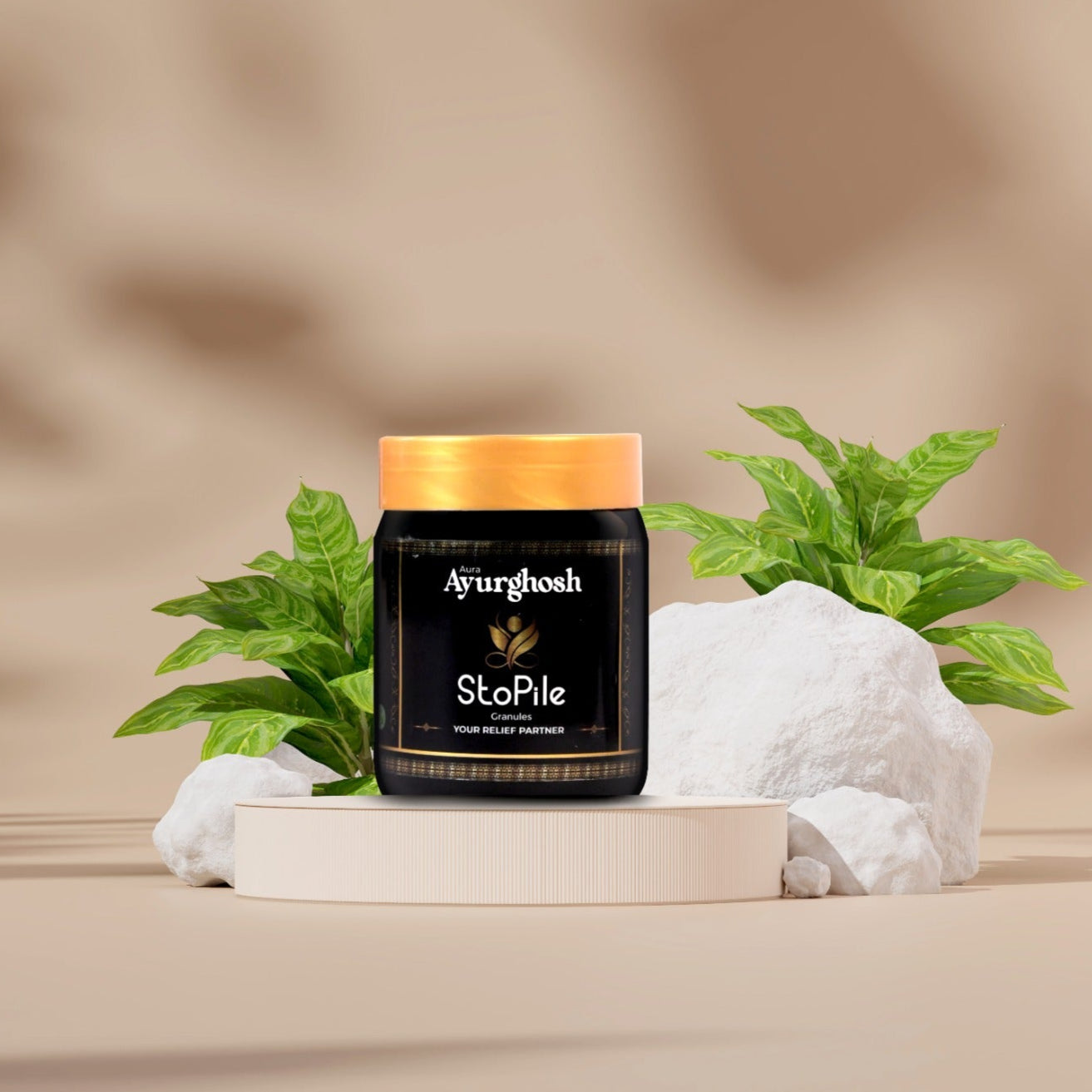
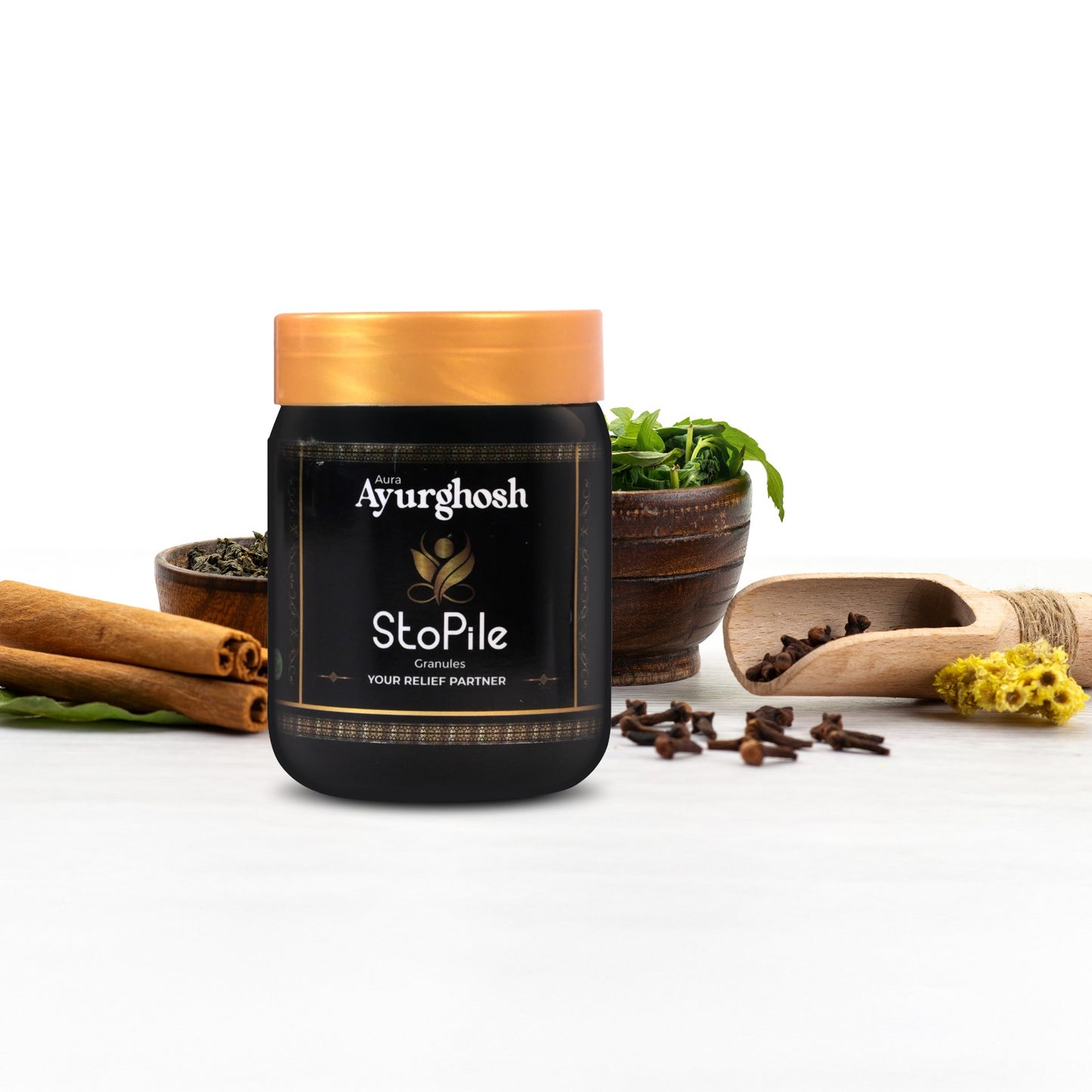
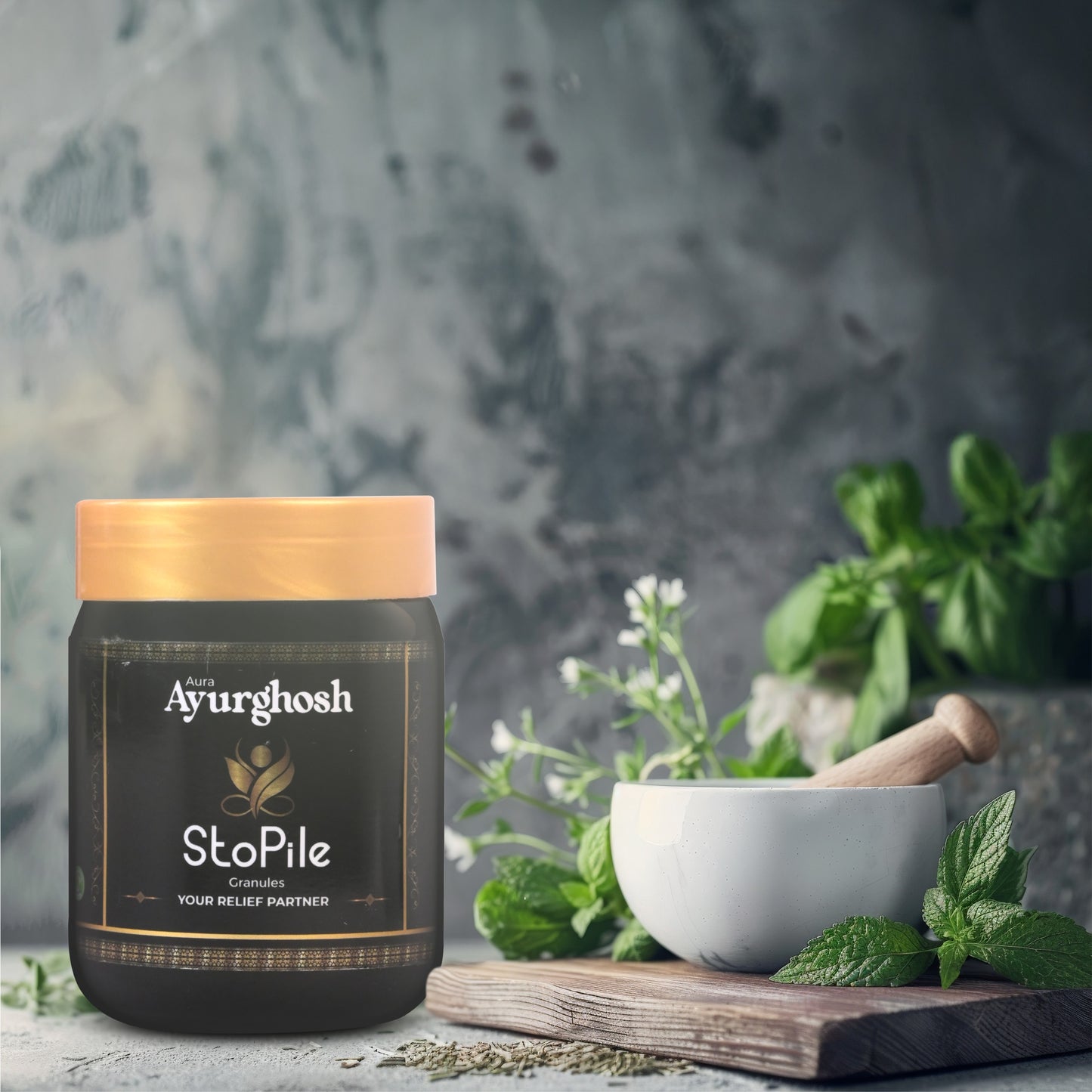
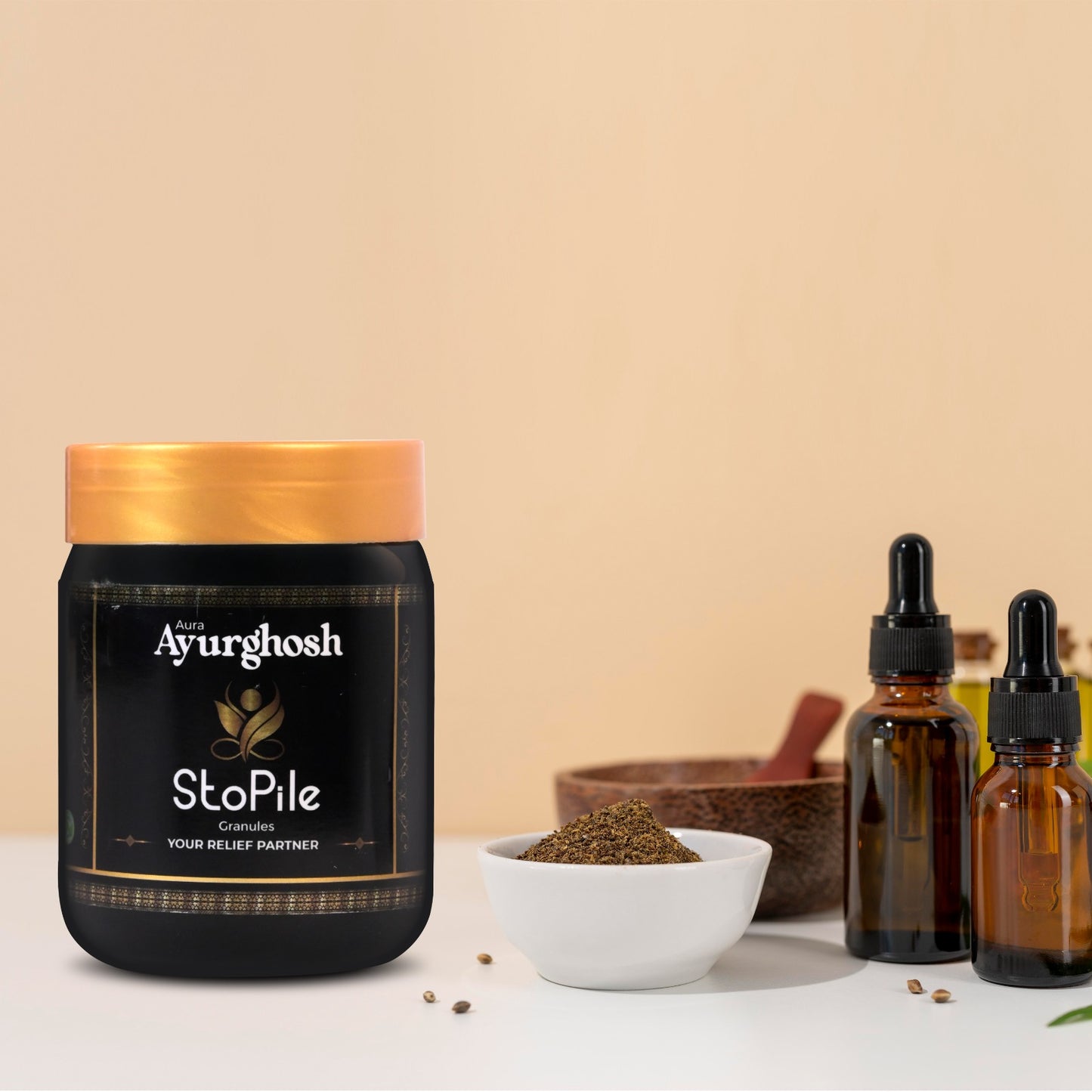
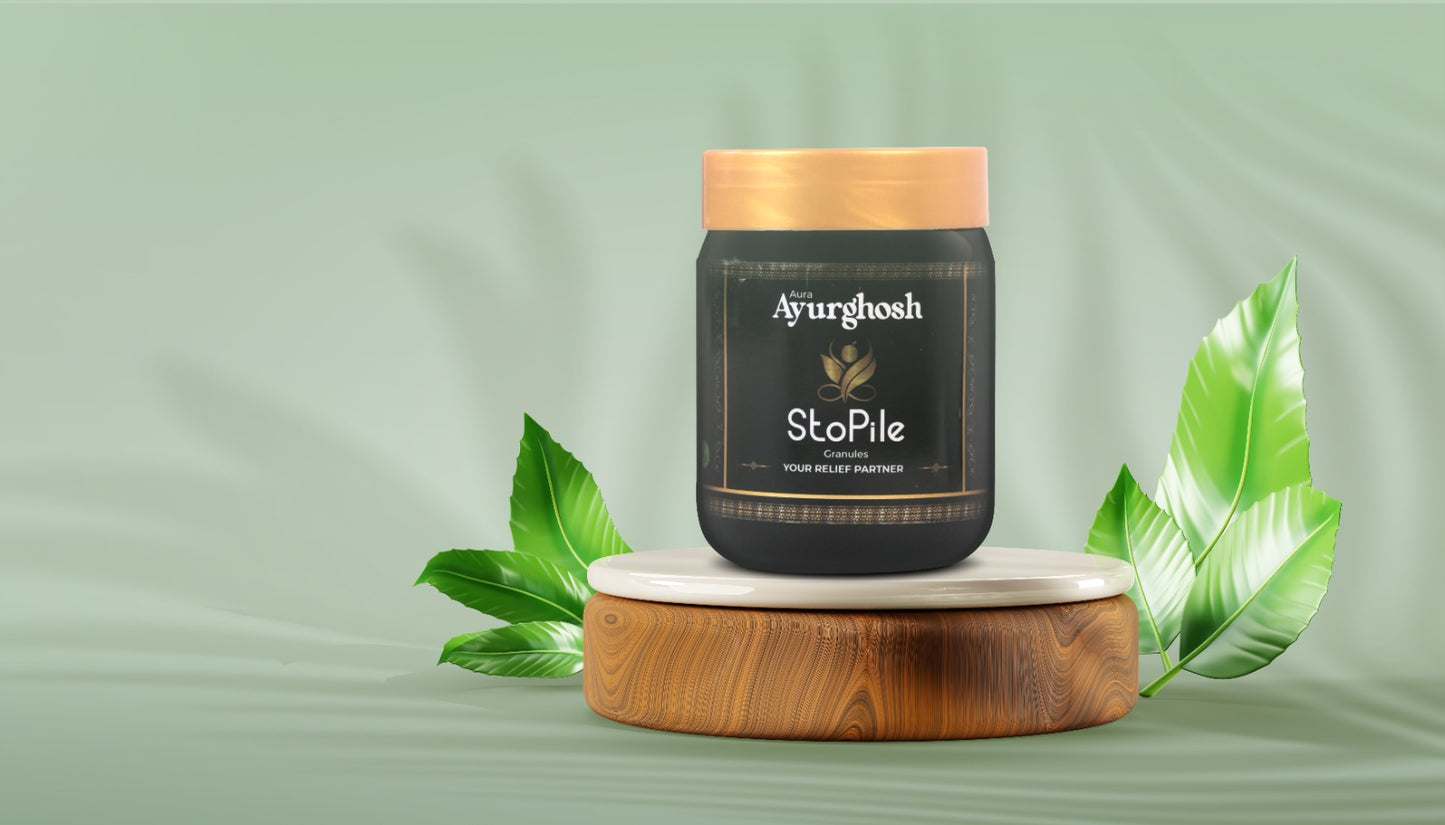
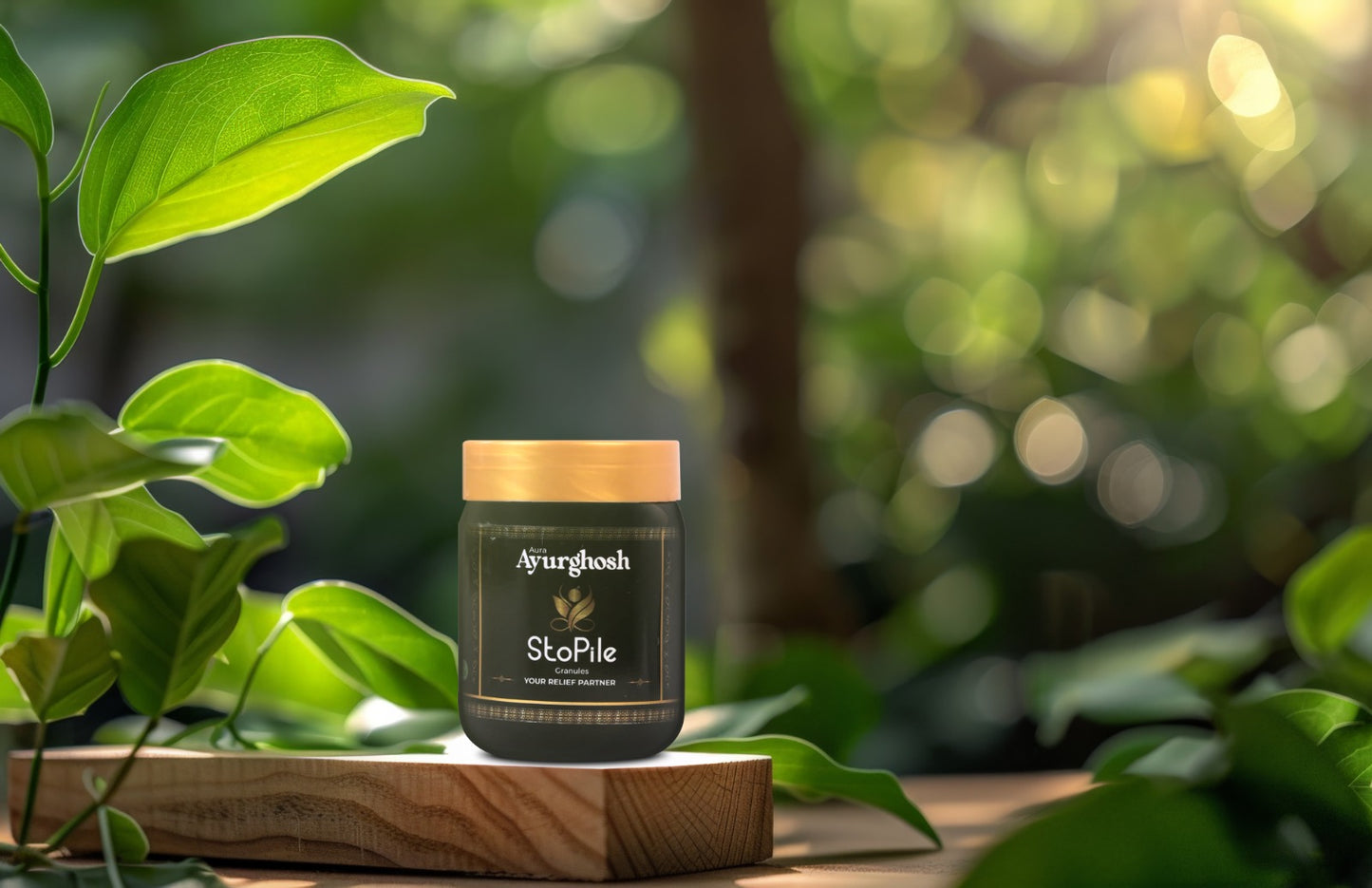
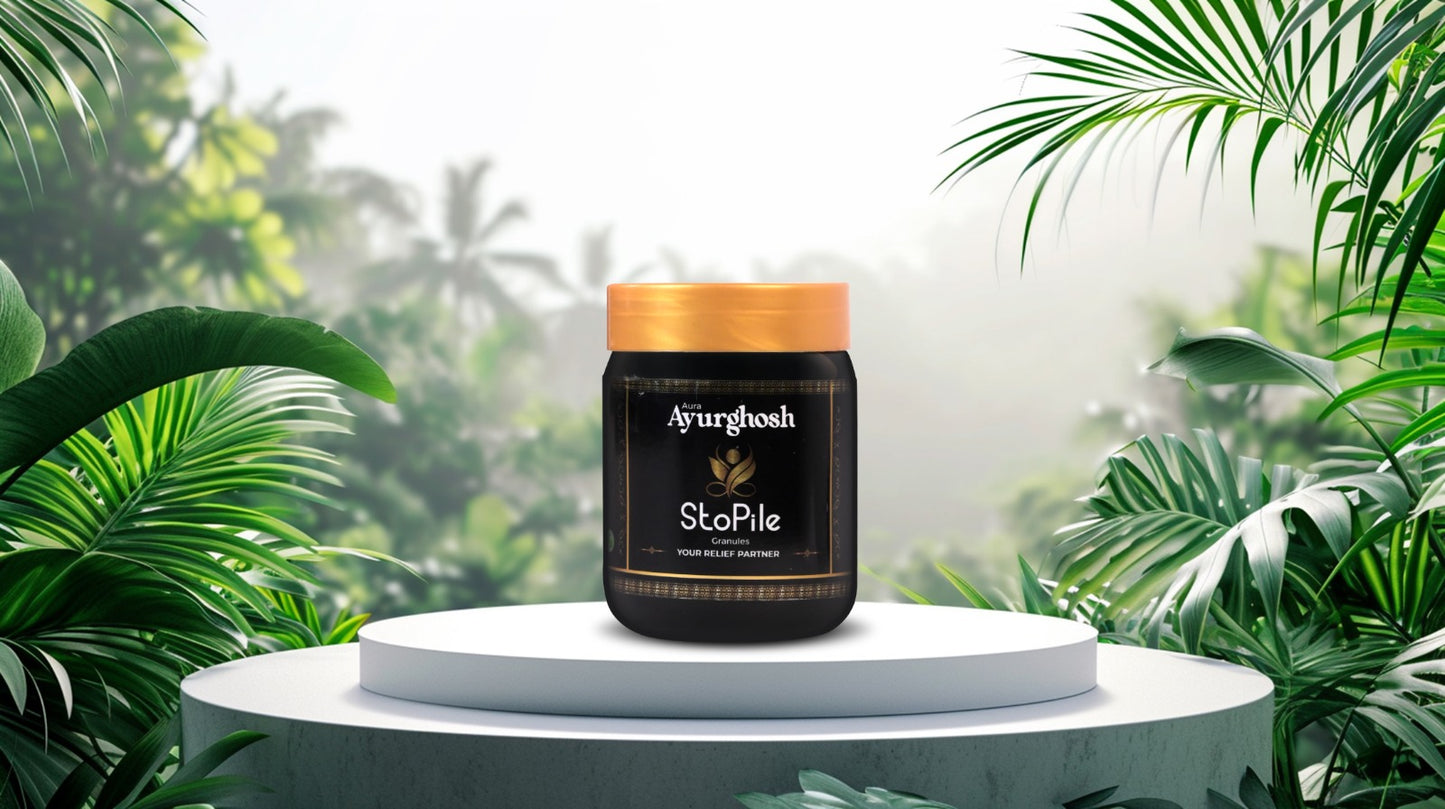
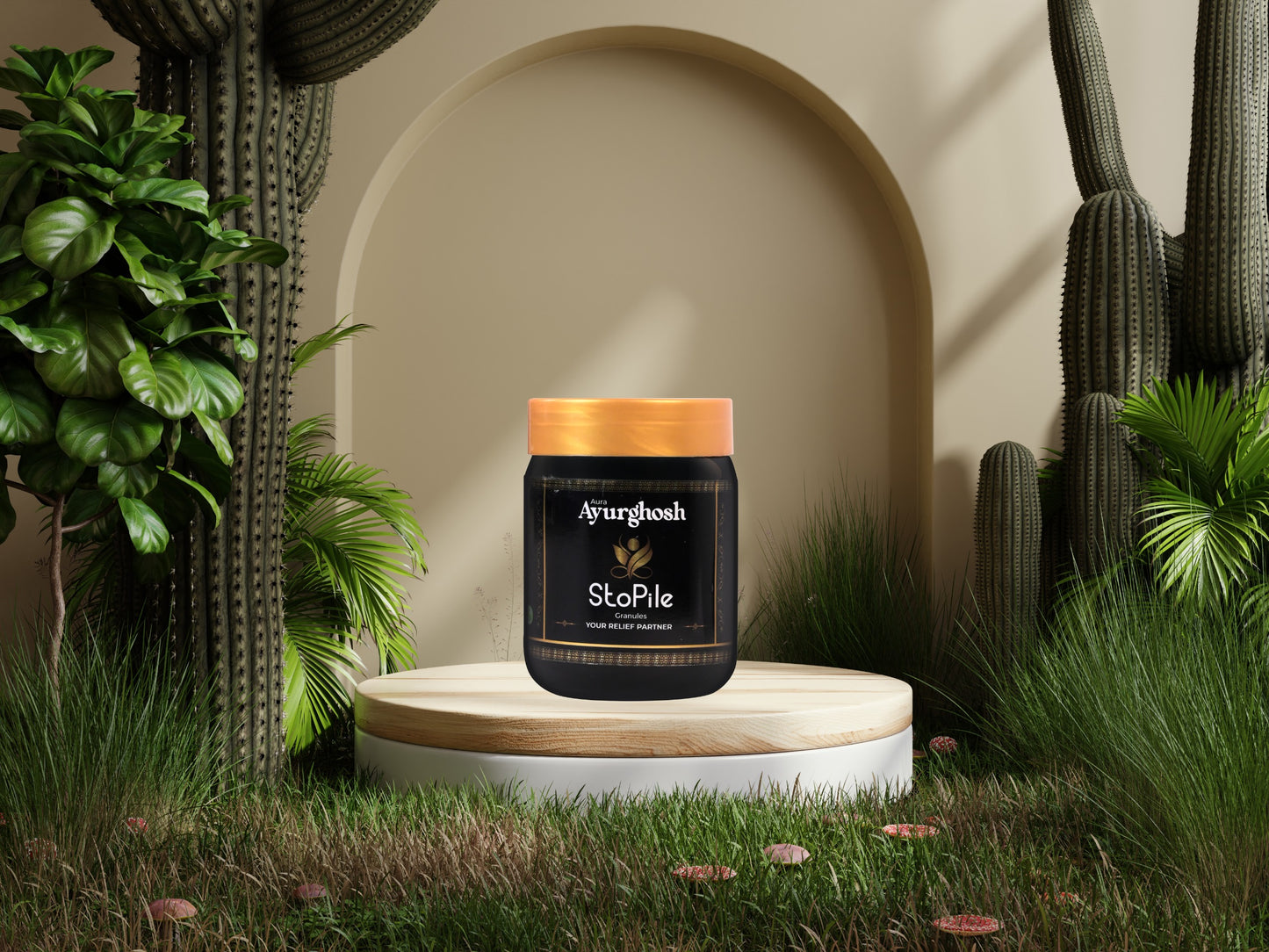
-
Curated by ayurvedic experts
-
No heavy metals
-
Safe for long term use
-
FSSAI Approved
-
Clinically Proven
-
No side effects
-
25 years of trust and wellness
-
Crafted with power of 24 potential herbals
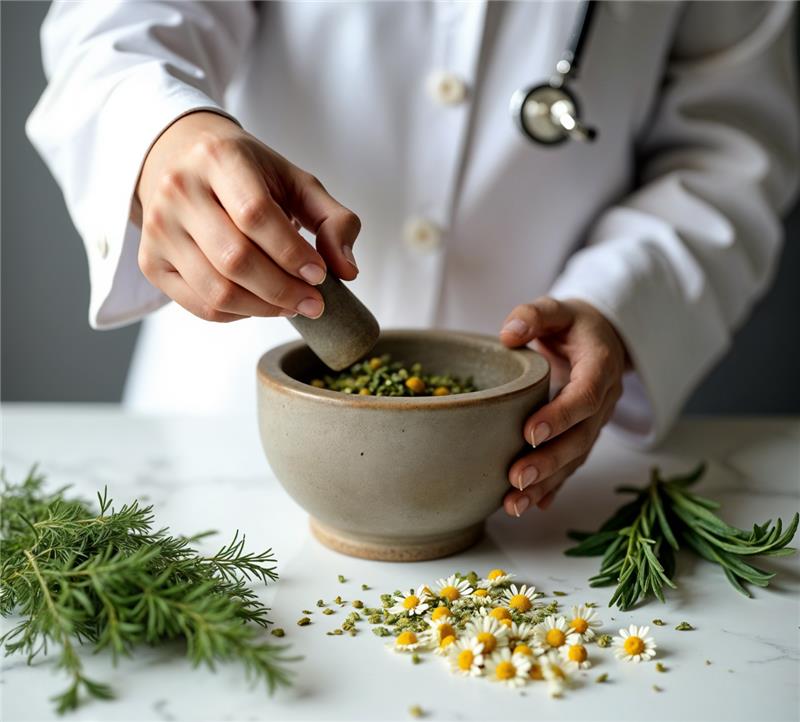
Expertly Formulated Remedies
Our formulations are meticulously crafted by experienced doctors, combining the wisdom of herbs with profound knowledge to ensure effective and reliable solutions.
-
WEEK 1 - 2
- Stops bleeding
- Immediate pain relief
- Relieves constipation
- Improves appetite
- Reduces bowel irritation and gas trouble -
WEEK 2 - 4
- 50% shrinkage of pile mass (first-degree)
- Significant pain relief
- Noticeable relief from constipation and gastric disturbances -
WEEK 4 - 6
-100% shrinkage of pile mass(first degree)
- 80% shrinkage of pile mass (second-degree)
- Further pain relief
- Better relief from gas trouble
- Improved bowel patterns -
WEEK 6 - 8
- 90% shrinkage of pile mass
- Full relief from constipation and gas trouble
- Remarkable changes in presenting symptoms
Path to Relief
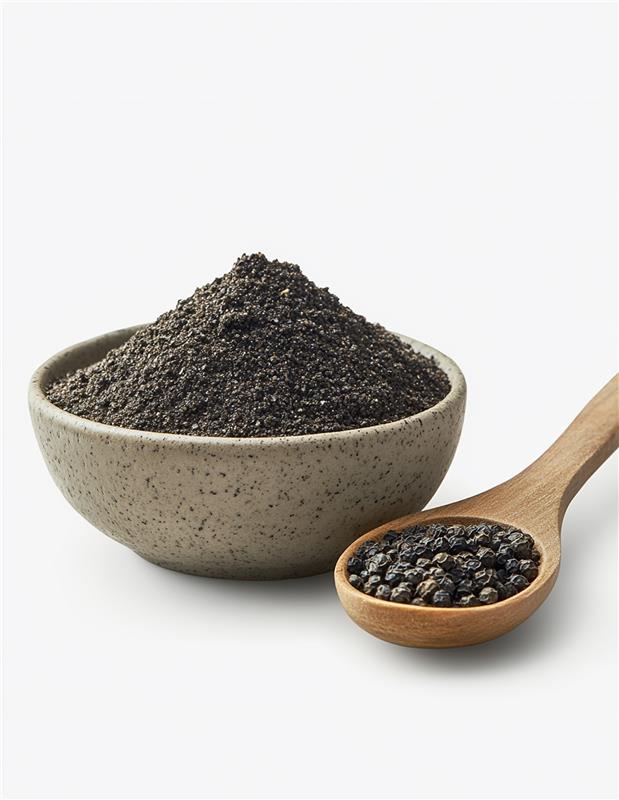
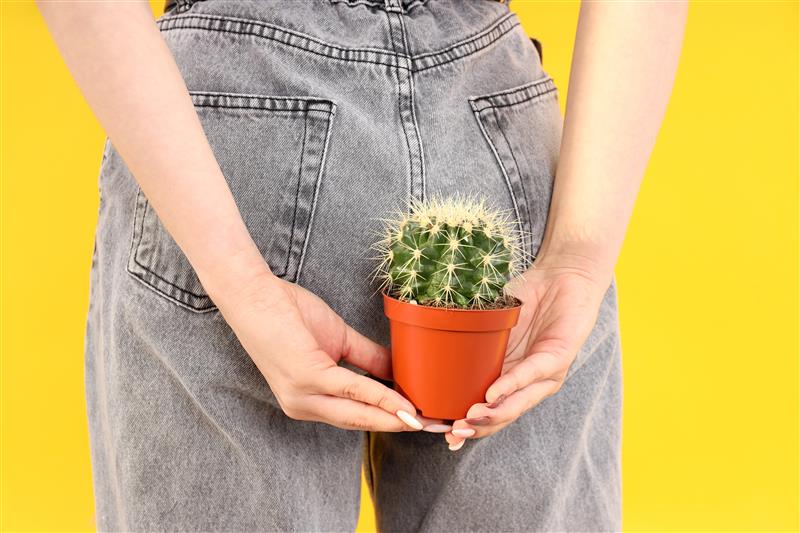
STOPILE GRANULES 120G
Frequently Asked Questions
What are hemorrhoids?
Hemorrhoids are swollen, enlarged veins that form inside and outside of your anus and rectum. They can be painful and uncomfortable and cause rectal bleeding. Hemorrhoids are also called piles. We’re all born with hemorrhoids, but at baseline, they don’t bother us. It’s only when they become swollen and enlarged that they produce irritating symptoms
How common are hemorrhoids?
An estimated 1 in 5 has symptomatic hemorrhoids. They affect people of all ages, sexes, races and ethnicities. They’re more common as you age, affecting more than half of people over age 50.
Who might get hemorrhoids?
Anyone can get symptomatic hemorrhoids, even teenagers. (But because hemorrhoids take a while to develop, they’re uncommon in children.) You may be more at risk if you:
Have overweight/obesity.
Are pregnant.
Eat a low-fiber diet.
Have chronic constipation or diarrhea.
Regularly lift heavy objects.
Spend a lot of time sitting on the toilet.
Strain while having bowel movements.
What are the types of hemorrhoids?
Hemorrhoids can happen inside or outside of your rectum. The type depends on where the swollen vein develops. Types include:
External: Swollen veins form underneath the skin around your anus. Your anus is the canal where your poop comes out. External hemorrhoids can be itchy and painful. Occasionally, they bleed. Sometimes, they fill with blood that can clot. This isn’t dangerous, but can result in pain and swelling.
Internal: Swollen veins form inside your rectum. Your rectum is the part of your digestive system that connects your colon (large intestine) to your anus. Internal hemorrhoids may bleed, but they usually aren’t painful.
Prolapsed: Both internal and external hemorrhoids can prolapse, meaning they stretch and bulge outside of your anus. These hemorrhoids may bleed or cause pain.
What other conditions cause hemorrhoid-type symptoms?
Different gastrointestinal disorders can cause rectal bleeding and other symptoms similar to hemorrhoids. Some of these disorders are life-threatening. For this reason, it’s important to let a healthcare provider know when you’re having symptoms.
Bowel diseases that can cause bleeding include:
Colon cancer.
Crohn’s disease.
Ulcerative colitis.
Diagnosis and Tests
How are hemorrhoids diagnosed?
A healthcare provider diagnoses hemorrhoids based on symptoms and a physical exam. You may also have:
Digital rectal exam: Your provider inserts a gloved, lubricated finger into your rectum to feel for swollen veins.
Anoscopy: Your provider uses an anoscope (lighted tube) to view the lining of your anus and rectum.
Sigmoidoscopy: Your provider uses a sigmoidoscope (lighted tube with a camera) to view inside the lower (sigmoid) part of your colon and rectum. Procedure types include flexible sigmoidoscopy and rigid sigmoidoscopy (proctoscopy).
These tests may be uncomfortable but aren’t painful. They typically take place in a doctor’s office or outpatient center without anesthesia. You go home the same day.
Your provider may perform a colonoscopy to confirm findings from other tests or check for signs of colon cancer. This outpatient procedure requires anesthesia.
What causes hemorrhoids?
Straining puts pressure on veins in your anus or rectum, causing hemorrhoids. You might think of them as varicose veins that affect your bottom.
Any sort of straining that increases pressure on your belly or lower extremities can cause anal and rectal veins to become swollen and inflamed. Hemorrhoids may develop due to:
Pelvic pressure from weight gain, especially during pregnancy.
Pushing hard to have a bowel movement (poop) because of constipation.
Straining to lift heavy objects or weightlifting.
What are the symptoms of hemorrhoids?
Internal hemorrhoids rarely cause pain (and typically can’t be felt) unless they prolapse. Many people with internal hemorrhoids don’t know they have them because they don’t have symptoms.
If you have symptoms of internal hemorrhoids, you might see blood on toilet paper, in your stool or in the toilet bowl. These are signs of rectal bleeding.
Signs of external hemorrhoids include:
Itchy anus.
Hard lumps near your anus that feel sore or tender.
Pain or ache in your anus, especially when you sit.
Rectal bleeding.
Prolapsed hemorrhoids can be painful and uncomfortable. You may be able to feel them bulging outside of your anus and gently push them back inside.
Featured products
-
Duo combo Stopile | STOPILE GRANULES
Regular price Rs. 3,398.00Regular priceUnit price / per -
STOPILE GRANULES 120G
Regular price Rs. 1,799.00Regular priceUnit price / perRs. 1,800.00Sale price Rs. 1,799.00Sale -
Trio combo Stopile | STOPILE GRANULES
Regular price Rs. 5,000.00Regular priceUnit price / per
Your Journey to Wellness
-

Support Your Wellness Naturally
Our granules are crafted from natural ingredients to support your digestive health, helping you maintain a balanced lifestyle. Feel better with each day.
-

Trusted Relief for All Ages
Designed for gentle yet effective relief, our granules offer a safe, trusted solution for managing piles, so you can focus on enjoying life with loved ones.
-

Pure Ingredients, Proven Results
Made with the highest quality natural ingredients, our formula is safe and effective. Experience relief without compromise.



